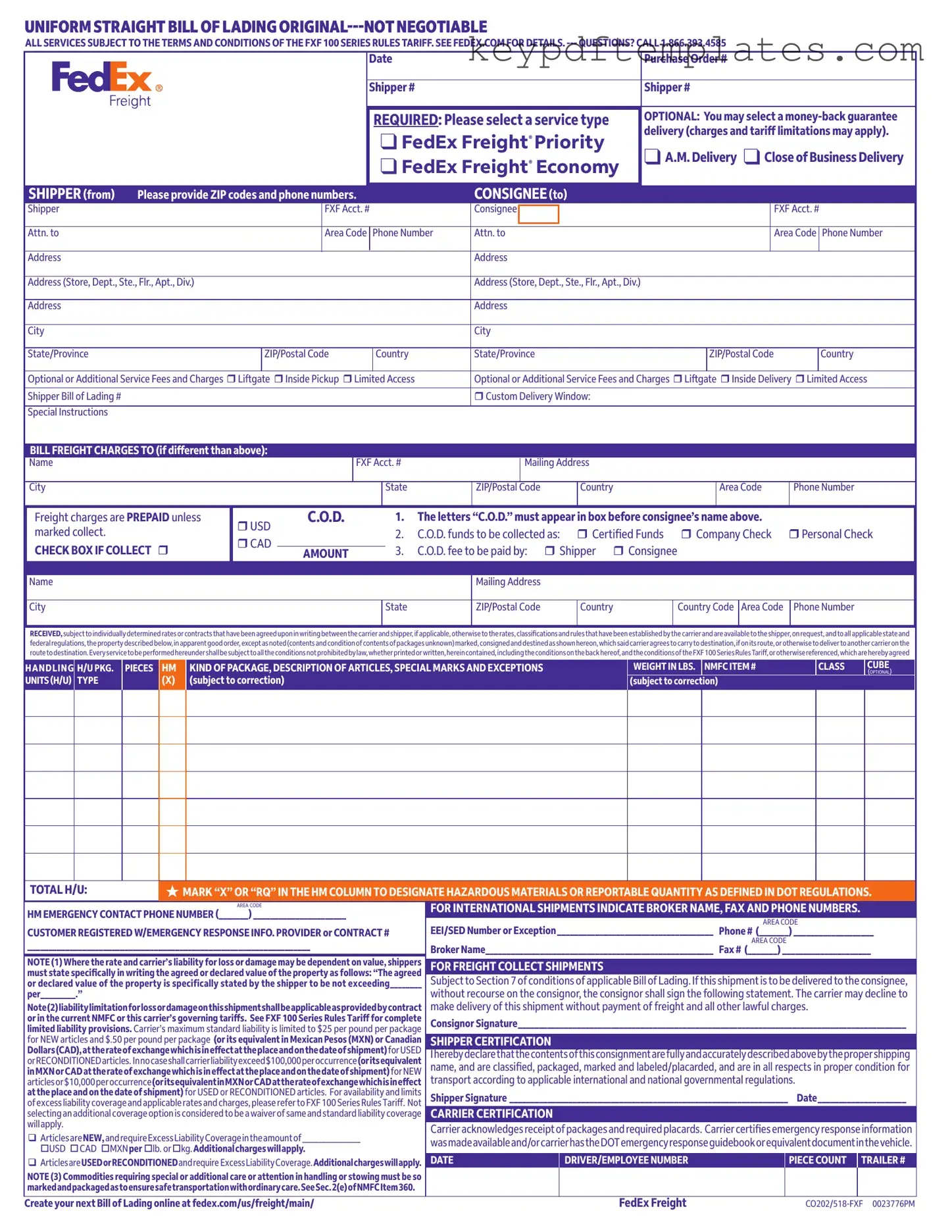Get Fedex Bill Of Lading Form
The FedEx Bill of Lading is a crucial document used in freight shipping. It serves as a receipt for goods and outlines the terms under which the carrier agrees to transport the shipment. Understanding its components and requirements can help ensure a smooth shipping experience.
Modify Document Online
